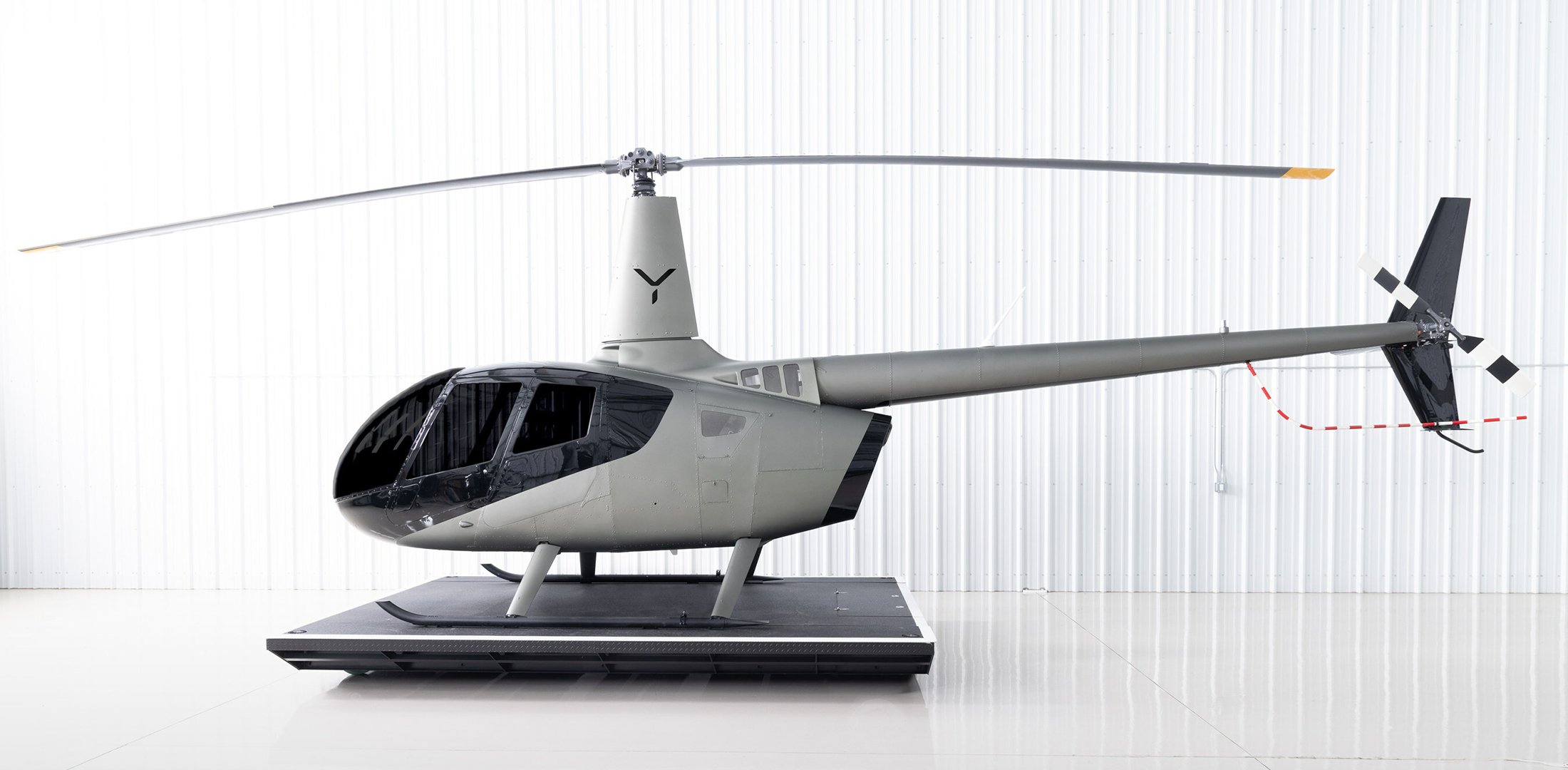Flight automation specialist Skyryse has kicked off a full flight test campaign with its FlightOS highly-automated flight control system, which the company says could improve safety and reduce pilot workload for a variety of aircraft, including helicopters, fixed-wing aircraft, and eVTOL air taxis.
The California-based start-up has been extensively testing its FlightOS system in a Robinson R44 light helicopter since 2018. It has also installed the highly-automated flight deck on the larger Robinson R66 helicopter and flew that testbed for the first time last year. Now the company has launched a full flight test campaign using the R66, the first aircraft for which it plans to obtain a supplemental type certificate (STC) from the FAA.
Skyryse says it is now conducting daily flights with its R66 testbed, which includes production-representative versions of the FlightOS flight control system as well as the full suite of sensors that provide real-time situational awareness. While the company’s R44 testbed maintained its traditional manual controls, all of the mechanical controls on the R66 have now been replaced with the FlightOS system.
“With five years of flight testing and development, we are now at a stage of our flight campaign where the controls and sensor suite are successfully managing the aircraft every day,” said Skyryse founder and CEO Mark Groden. “By replacing manual systems and actively testing FlightOS, our systems have the pedigree of five years of in-flight testing. The idea of simpler, safer flight will be a reality very soon, not decades from now.”
Flight OS replaces many of the complex controls found in typical general aviation flight decks with a touchscreen display and a joystick, while fly-by-wire hardware and software handle most of the core piloting functions, according to Skyryse. This system helps to prevent pilots from inadvertently exceeding safe flight envelopes, and the company says it’s simple enough that any pilot could learn to use it in just a matter of minutes.
In addition to the drop-in flight control system, which will be vehicle-agnostic, Skyryse says it is also working to certify a FlightOS-equipped version of the R66 that will be capable of operating under instrument flight rules (IFR). Most commercial single-engine helicopters only operate under the limitations of visual flight rules (VFR). According to Skyryse, the IFR-capable R66 will drastically reduce both acquisition and operating costs compared to any other IFR-rated helicopters, which cost an average of $5 million to purchase and more than $1,500 per hour to operate.
In February, the FAA confirmed that FlightOS meets all of the agency’s means-of-compliance requirements, clearing the way for the company to complete applications for the STCs it will need to begin retrofitting aircraft with the new flight control system, starting with the R66. At the time, Skyryse said it intends to have the first aircraft converted under STCs in service in less than 18 months. The FAA has agreed that no new rulemaking will be required to certify the new system, as FlightOS is entirely comprised of parts and technologies that have been certified in the past.
